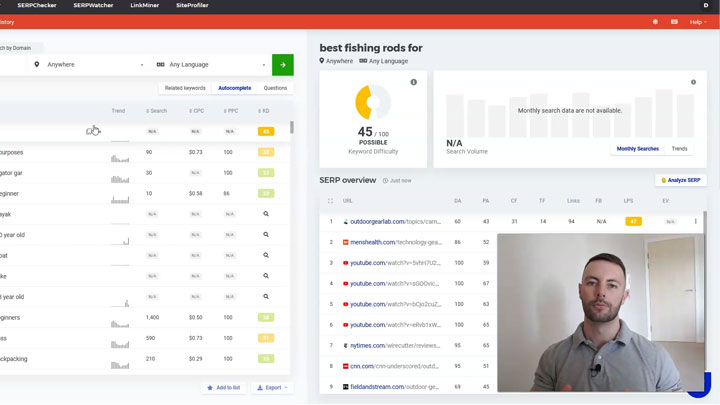When it comes to affiliate marketing, there’s one thing many people get confused about & that’s the affiliate marketing landing page.
In fact, I’d estimate that around 90% (or more) of the people that talk about affiliate marketing landing pages don’t fully understand what they are.
So, in this blog post, I’ll be explaining everything you need to know, along with providing some affiliate marketing landing page examples and showing you step-by-step how to make one.
Plus, for once & for all, I’ll also uncover the big difference between a landing page & squeeze page.
Let’s start with the most important question first, then.
Free Training
Become a Super Affiliate Marketer 🚀
Sign up for our free affiliate marketing training & learn how you can become a super affiliate in any niche. Discover powerful traffic generation methods & little-known tactics to generate the most revenue for every single click.
What Is An Affiliate Marketing Landing Page?
Technically speaking, an affiliate marketing landing page refers to the first page a new user lands on.
For example, this page that you’re reading right now is, in theory, a landing page & most of the new people landing on this page arrive via Google search.
Now, admittedly, there’s a high chance that this page probably doesn’t look like the typical “landing pages” you’re used to seeing or the idea of what you thought a landing page might look like in your head.
And that’s because many people get the terms squeeze page & landing page confused.
So, what’s the difference?
Well, as mentioned, “landing page” refers to the first page a new user lands on & the term “landing page” doesn’t define the page’s appearance or goals.
On the other hand, a squeeze page refers to a page specifically designed to get somebody who visits the page to complete a particular action, such as entering an email address or completing a registration form.
As a result, squeeze pages are typically (but not always) very minimalistic & contain a clear call to action.
In fact, most well-optimized squeeze pages will physically only allow you to take one action.
For example, if the squeeze page’s goal is to get you to enter your email address, there will generally be no other buttons on the page to distract you from the primary goal.
Here’s an example of what I mean:

As you can see, the page only allows you to take one action: sign up for the free Instagram online training.
Aside from that, there is nothing else you can do on the page. So, can you see how this page is “squeezing” you into completing a specific goal?
That’s why it’s called a squeeze page.
But, as mentioned, if this is where your new users are landing, then it does also become a landing page, so for the rest of this blog post, that’s what we’ll be referring to it as.
And now that we’ve cleared that up let’s take a look at some more examples.
Affiliate Marketing Landing Page Examples
Affiliate marketing landing pages come in many different shapes & sizes & their layout typically differs depending on the goal that wants to be achieved.
There are, however, 2 main categories that affiliate marketing landing pages fall under & those are:
- Short-Form Landing Pages
- Long-Form Landing Pages
Basically, short-form landing pages provide minimal information & force the user to take action to find out more, whereas a long-form landing page does the opposite.
Long-form landing pages provide the user with lots of information in the hope that it will encourage them to complete the desired goal.
Here are some examples of short-form landing pages:
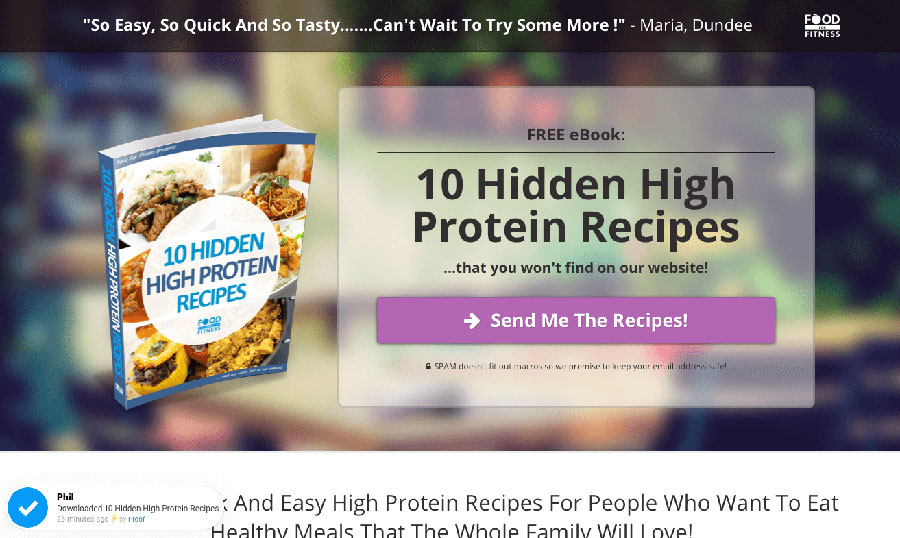
As you can see, the page makes it very clear very quickly as to what you will be getting & provides a prominent call-to-action button.

Again, the landing page above follows a similar trend. Very simple but makes it very clear what you’re getting & provides a stand-out call to action.
Long-form landing pages, on the other hand, take a slightly different approach.
Here are some examples of long-form landing pages:
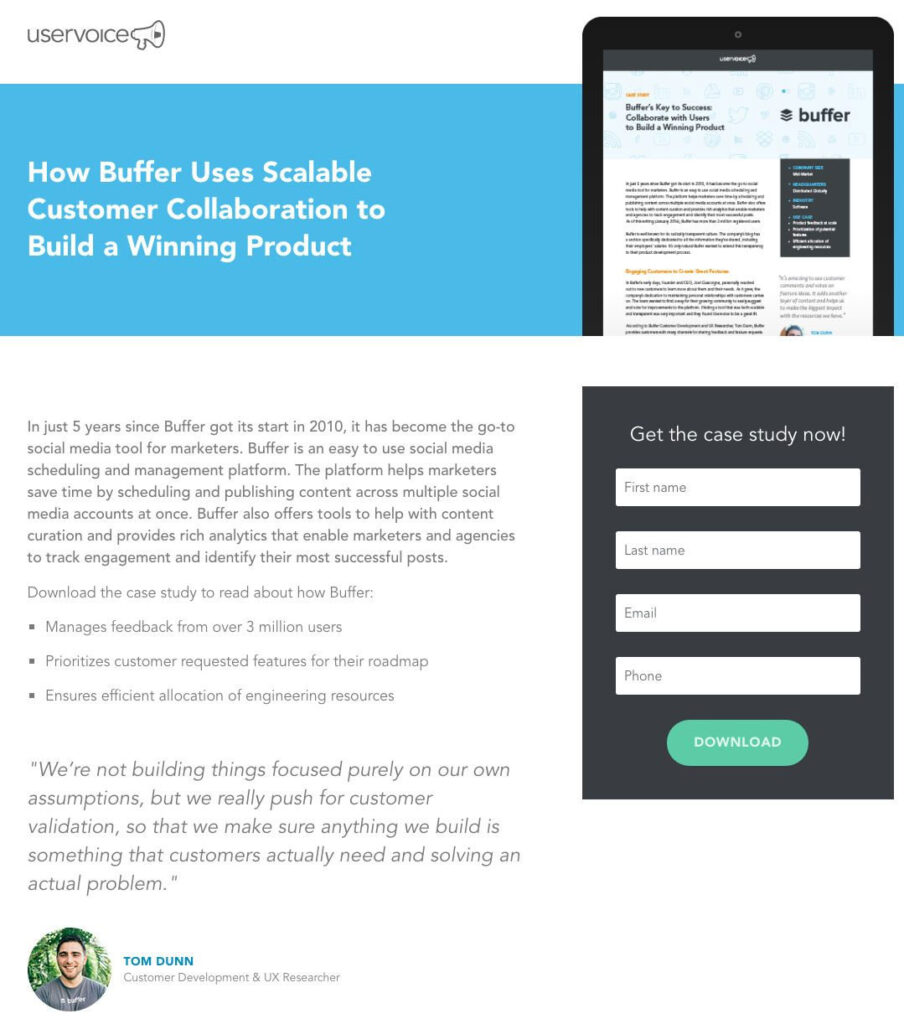
As you can see, the landing page above provides more information than the previous short-form examples yet still displays a prominent call to action.
A key difference in this example, however, is the fact that, as opposed to asking for just an email address, they’re asking the user to complete 4 different fields.
Naturally, the more information you ask for, the harder it is to get people to convert & that is likely the reason the creator of this landing page has chosen to go the long-form route.
In this instance, the creator has to do more convincing to get the details he wants the user to submit.
And here is another example of somebody going the long-form route:
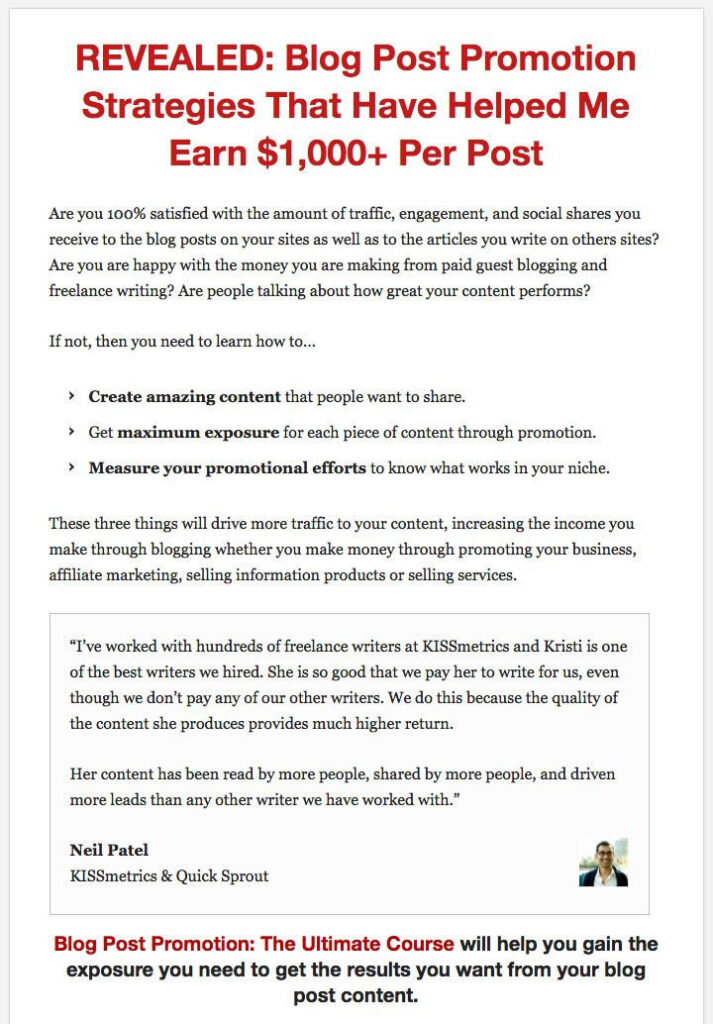
In the above instance, the creator of that landing page is selling a course for $300 & so, as you can imagine, he certainly has some convincing to do.
Now, after browsing the affiliate marketing landing page examples above, you’ve likely spotted a trend.
If the audience already knows you or you’re not asking for much from the user, a short-form landing page will likely be the best option.
But if the audience doesn’t yet know you or you’re asking for a lot of information (or money), a long-form landing page will probably be essential.
However, this raises another question, which is…
Can You Do Affiliate Marketing Without A Landing Page?
Yes, it’s possible to do affiliate marketing without creating a landing page. Still, it’s not necessarily a wise choice & it’s rare to see any successful affiliate marketers not using landing pages.
Why?
Well, whilst you can simply send somebody direct to a product or service via an affiliate link & earn a commission, that would only see you earning once from that person.
The idea of a landing page (aka a squeeze page) is to collect the contact details for a user first so that you can follow up with them at a later date & promote additional products to earn even more commissions.
That way, you get a customer rather than just a commission.
You see, whilst it’s nice to earn commissions, what you should really focus on to be as successful as possible is something known as LTV.
LTV stands for lifetime value & it refers to the amount of money you can earn from a customer. In other words, how valuable that customer is to you.
So, let’s say we’re directly promoting a product related to weight loss that pays $20 commissions & we’re not using a landing page.
The maximum we can earn per referral is $20. That’s it.
However, if we use a landing page instead & collect an email address, for example, we could earn that same $20 but later earn much more.
All we’d have to do is follow up with additional recommendations & given that we know they’re interested in weight loss, it will be easy to know what to promote.
Hopefully, that helps you understand the advantage of using a landing page for affiliate marketing, but we’ll look into it in a little more detail below.
Why Use A Landing Page For Affiliate Marketing?
There are many reasons why you might want to use a landing page for affiliate marketing, but the main & most important ones are:
- To increase conversion rates
- To increase your overall earnings
- To use paid advertising
So let’s take a closer look into each of those points below.
Increasing Conversion Rates
By using a landing page for affiliate marketing, you can often drastically increase your conversion rates, especially if you’re promoting something high-ticket.
This is because a landing page allows you to introduce a product and “presell” it to your audience before sending them to the sales page.
Alongside that, if you collect contact details from your audience on your landing page, you can follow up with the people that don’t buy & encourage them to convert.
Increasing Overall Earnings
If you convert higher, you’re naturally going to earn more money. However, alongside that, you can also promote additional products to people if you use your landing page to build a subscriber base.
For example, a common approach is to use a landing page to build an email list.
That way, you can reach out to people down the line with more relevant offers & earn additional commissions from the same people, increasing their overall value to you.
To Use Paid Advertising
When it comes to paid advertising, most big companies (like Google Ads) have strict policies as to what you can & cannot promote.
Often, you cannot promote affiliate links directly & therefore, you will need to create a landing page to act as an intermediary bridge page between the ad & your offer.
Also, when running paid ads, it’s absolutely vital that you are building a subscriber base through a landing page. Otherwise, you will struggle to reach a long-term ROI.
Every penny counts when paying for advertising & therefore, it is vital to maximize conversions & LTV by utilizing an affiliate marketing landing page.
How To Make A Landing Page For Affiliate Marketing
When making landing pages for affiliate marketing, many people think they need sales funnel software like ClickFunnels, but that’s not true.
If you have a website, you can easily make landing pages for free using WordPress.
And if you don’t have a website, here’s why you NEED a website for affiliate marketing.
But here are your options for making a landing page for affiliate marketing:
- Use one of the best landing page software tools (if you don’t have a website)
- Build a free landing page in WordPress (if you do have a website)
My preference is always to build landing pages in WordPress. It’s super easy.
So, here’s the process for making a free landing page in WordPress:
Step 1: Create a New Page
Create a new page in WordPress by going to “Pages” -> “Add New” & bring up the blank editor screen, as shown below:

Step 2: Grab a Pattern
WordPress has lots of free patterns that you can simply copy & paste. Simply browse their pattern directory & search for “landing page” (or similar), then copy it.
Here’s an example I found:
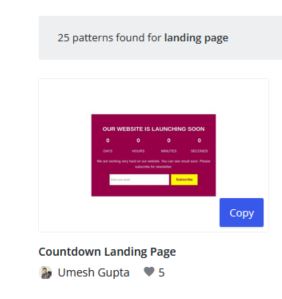
Step 3: Paste The Pattern Into Your Page
Head to your WordPress page & paste the pattern that you just copied. It should look something like this:
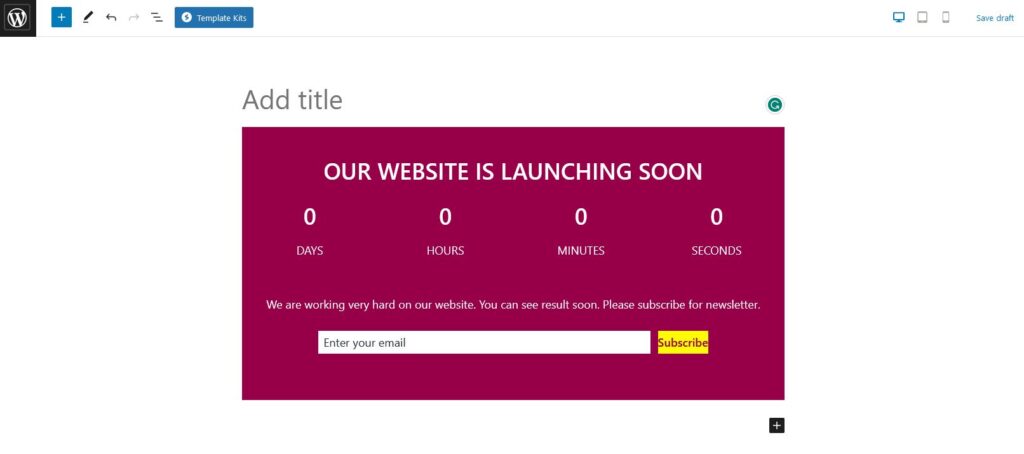
And that’s it. You’re good to go!
Simply edit the pattern as you like to suit your needs & wallah, you’ve officially created your very own landing page. It was as easy as that.
You can then also integrate with your chosen services, such as AWeber if you wish to use your landing page to build an email list.
The good news is that AWeber also has a WordPress plugin, so integration is really easy.
Best Landing Page For Affiliate Marketing
After reading this post, you might now be wondering, “what is the best landing page for affiliate marketing?” but in reality, there isn’t one.
I’d love to be able to provide you with the highest-converting landing page design, but when it comes to landing pages, it’s a case of trial & error.
What works for one person or one niche generally doesn’t work well for others.
As a result, you will need to carry out what’s known as A/B testing, which involves trying different variations of your landing pages to see which one works best.
For example, you could send 50% of your traffic to Page A & 50% to Page B. Then you would monitor your conversion rates & determine the winner.
You could continue this process for as long as you like with different landing pages until you reach a conversion rate that you’re satisfied with (where you can achieve a positive ROI).
But, in general, there are some common traits of successful landing pages which are:
- The use of large, easy-to-read fonts
- The use of a clear call to action
- Offering a freebie (a lead magnet), such as a downloadable eBook
- Minimal elements on the page
- A combination of both video & text
And it goes without saying that loading speed is vital.
Affiliate marketing landing pages need to load fast, period. So be sure to test the speed of your landing page & make sure it’s optimized.
The Bottom Line
Landing pages provide both a fantastic & easy way to increase your conversion rates & increase the lifetime value of your traffic.
Plus, as mentioned, they can also help you when it comes to running paid advertisements.
So, hopefully, this guide to affiliate marketing landing pages has helped you out & I hope you found it insightful. Did I clear up the difference between squeeze pages & landing pages well?
Did you already know the difference? Let me know in the comments below.
Also, if you have any other questions, feel free to leave those below too.
And if you’d like to learn how to build a thriving affiliate marketing business in the shortest time possible, be sure to sign up for our free affiliate marketing training course before you leave. 💪

